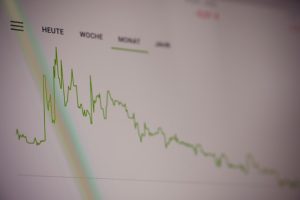Forex, also known as foreign exchange, is the largest financial market in the world. It is a decentralized market where currencies are traded 24 hours a day, five days a week. The forex market is highly liquid, with trillions of dollars exchanging hands every day. To navigate through this market, traders need to understand various concepts and terminologies, one of which is structure. In this article, we will explore what structure means in forex and how it impacts trading decisions.
Structure in forex refers to the visible pattern of price movements on a chart. It is the framework that traders use to identify trends, support and resistance levels, and market conditions. Structure is a critical component of technical analysis, which is the study of past price movements to predict future price movements. Technical analysts use charts to identify patterns in price movements, which they use to make trading decisions.
Understanding structure requires knowledge of various chart patterns, such as trend lines, channels, and triangles. A trend line is a diagonal line that connects two or more price points and shows the direction of the trend. An uptrend is characterized by higher highs and higher lows, while a downtrend is characterized by lower highs and lower lows. Channels are formed when the price moves within two parallel trend lines, while triangles are formed when the price consolidates between two converging trend lines.
Support and resistance levels are also part of the structure in forex. Support levels are price levels where buyers are expected to enter the market, causing the price to bounce back up. Resistance levels are price levels where sellers are expected to enter the market, causing the price to fall back down. These levels are identified by looking at previous price movements, where the price has bounced off or been unable to break through a certain level.
In addition to identifying trends and support and resistance levels, structure also helps traders to identify market conditions. Market conditions refer to the overall state of the market, whether it is trending, ranging, or consolidating. By analyzing the structure of the market, traders can determine whether to enter a trade, exit a trade, or stay on the sidelines.
For example, if the market is in an uptrend, traders may look for opportunities to buy when the price pulls back to a support level. Conversely, if the market is in a downtrend, traders may look for opportunities to sell when the price rallies to a resistance level. In a ranging market, traders may look for opportunities to buy and sell at support and resistance levels, respectively. In a consolidating market, traders may stay on the sidelines and wait for a breakout or a breakdown.
Structure also helps traders to manage their risk by setting stop-loss orders. A stop-loss order is an order to close a trade at a specific price level to limit potential losses. Traders can set stop-loss orders below support levels when buying or above resistance levels when selling. This way, if the price moves against their position, the trade will be automatically closed, and the losses will be limited.
In conclusion, structure is a vital concept in forex that traders need to understand to make informed trading decisions. It refers to the visible pattern of price movements on a chart, including trends, support and resistance levels, and market conditions. By analyzing the structure of the market, traders can identify trading opportunities, manage their risk, and make informed trading decisions. Traders can use technical analysis tools to identify and analyze the structure of the market, such as trend lines, channels, and triangles.





